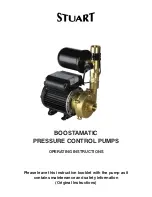
SKU 95313
For technical questions, please call 1-800-444-3353
Page 4
never use the chainsaw sharpener without
the grinding wheel cover (11) in place.
always test the grinding wheel (8) by run-
ning it for a minute prior to contact with a
chain.
Keep away from the wheel when it is turn-
ing,
and make sure no one is standing close,
in the line of the wheel rotation trajectory.
if the grinding wheel vibrates,
turn off the
machine immediately and check that it is
mounted securely, and that is not out of bal-
ance or damaged.
never try to stop the grinding wheel with
your hands,
even if you are wearing safety
gloves. The wheel will cut through gloves
and your hand, causing serious injury.
never operate tool without the grinding
wheel cover in place.
the listed speed on replacement grinding
wheel must meet or exceed rpM rating of
the tool, which is 4200 rpM.
nEVEr lEaVE tOOl running unat-
tEndEd. turn pOwEr OFF. don’t leave
tool until it comes to a complete stop.
warning!
Some dust created by power
sanding, sawing, grinding, drilling, and other
construction activities, contain chemicals
known (to the State of California) to cause
cancer, birth defects or other reproductive
harm. Some examples of these chemicals
are: lead from lead-based paints, crystalline
silica from bricks and cement or other ma-
sonry products, arsenic and chromium from
chemically treated lumber. Your risk from
these exposures varies, depending on how
often you do this type of work. To reduce
your exposure to these chemicals: work in a
well ventilated area, and work with approved
safety equipment, such as those dust masks
that are specially designed to filter out micro
-
scopic particles.
(California Health & Safety
Code 25249.5, et seq.)
warning!
People with pacemakers should
consult their physician(s) before using this
product. Electromagnetic fields in close
proximity to a heart pacemaker could cause
interference to or failure of the pacemaker.
4.
5.
6.
7.
8.
9.
10.
11.
12.
13.
grOunding
tO prEVEnt
ElEctric shOcK
and dEath FrOM
incOrrEct grOunding wirE
cOnnEctiOn:
Check with a qualified electrician
if you are in doubt as to whether
the outlet is properly grounded.
do not modify the power cord
plug provided with the tool. never
remove the grounding prong from
the plug. do not use the tool if the
power cord or plug is damaged.
if damaged, have it repaired by a
service facility before use. if the
plug will not fit the outlet, have a
proper outlet installed by a qualified
electrician.
grounded tools: tools with three
prong plugs
3-prong plug and Outlet
Tools marked with “Grounding Required”
have a three wire cord and three prong
grounding plug. The plug must be con-
nected to a properly grounded outlet. If the
tool should electrically malfunction or break
down, grounding provides a low resistance
path to carry electricity away from the user,
reducing the risk of electric shock.
(see 3-
prong plug and Outlet.)
The grounding prong in the plug is connected
through the green wire inside the cord to the
grounding system in the tool. The green wire
in the cord must be the only wire connected
to the tool’s grounding system and must
never be attached to an electrically “live”
terminal.
(see 3-prong plug and Outlet.)
1.
2.
warning
warning
rEV 07l































